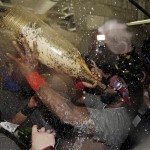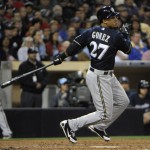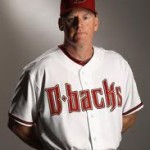So, as we wind down the 2013 World Series, one in which Boston star David Ortiz performed at levels rarely seen and earned the WS MVP as a result, a familiar narrative is sprouting up. Stop me if you’ve heard it;
“David Ortiz is a known PED user.”
And thus his accomplishments (and eventual Hall of Fame case) are forever tarnished.
Here’s the thing: what “proof” exactly is there that David Ortiz used PEDs?
(You know, David Ortiz, who just came in 3rd in the Boston mayoral race).
As far as I can tell, the source for the allegations against David Ortiz is this NY Times article, dated July 30 2009 by writer Michael Schmidt. Go ahead and read that article and tell me where exactly there is definitive proof of any positive test? Here’s a couple of salient quotes from the article which encompass the “proof” that compelled this writer to forever trash the reputations of these players:
- “…according to lawyers with knowledge of the results.”
- “The lawyers spoke anonymously because the testing information was under seal by a court order. “
- “The lawyers did not identify which drugs were detected.”
Hmm. This sounds awfully thin to me. Anonymous lawyers who claimed to have “knowledge of the results” of the 2003 surveys, who did not go on record and didn’t identify the supposed substance. AND, to make matters even worse, these lawyers were knowingly breaking federal laws by disclosing information that was a) supposed to be confidential and b) at the time under seal.
Why would anyone believe this?
In the same story, Ortiz “confirmed the report” but if you read exactly what he said, he didn’t admit to testing positive. He “confirmed that the union told him that the report was true.” That’s not an admission of usage of a PED. That’s just acknowledging that he was told his name was apparently on some list. And as noted later on (and referenced in the link at the bottom of this blog), MLB and the Union have since stated that some players on “the list” never tested positive; they were just on the list as having being tested. Or even worse (as is noted in the above link), “… in 2003, legally available nutritional supplements could trigger an initial ‘positive’ test under our program.” Furthermore, the commissioner of MLB released a statement openly questioning the 2003 results as well in 2016.
Think about that. Ortiz could have been drinking some supplement that was legal then, is legal now, but which triggered a positive test. Ortiz has vehemently denied initially or ever using anything illegal whenever it has been brought up since. Of course, those denials run shallow considering that every PED-suspected user denies in the same way.
Ortiz does not appear in The Mitchell Report; go ahead and search its 409 exhausting pages and there’s no mention of him. Nor does Manny Ramirez (ed; corrected after the fact; i had written Manny Rodriguez), who was also outed in the 2009 NY Times article. Ramirez’ reputation has since been sullied through his own stupidity and multiple subsequent positive tests … but I can’t help but wonder if Ortiz wasn’t being unfairly targeted by some faceless “lawyer with knowledge” who could very well have been a die-hard New York Yankees fan (this is the New York Times after all, and these proceedings were all conducted in New York City) with an axe to grind.
You may think this is a cynical approach. You may have blind faith that the journalist in question took his “sources” to his editors, who should have vetted the information and made the decision to publish based on such anonymous quotes. And to that I say, you’re a fool if you think that all journalists are prim and proper and squeaky clean in terms of their morals. You don’t know these people, you don’t know who their sources are, and you don’t know the motivations behind the breaking of federal laws in order to … do what exactly? Purposely tarnish the career of a player who didn’t do anything to anybody, and who apparently may not have even used the damn PEDs in the first place.
I find it troubling, that a man’s career, legacy and reputation are basically shot because of some unconfirmed report. If this was in a court of law, the “evidence” against Ortiz would be considered so thin that any right-minded judge would dismiss the case outright before it even began.
Ortiz commented on this topic in an SI piece recently and I can’t help but agree with his take on the situation. He felt helpless, he (claims) not to have ever heard anything about a positive test until his name appears in the New York Times. He claims that he’s asked repeatedly for additional proof, for the name of the drug he supposedly tested positive for … and has never been told! Think about that. The people who hold the evidence that has destroyed his legacy are refusing to give him details about his own test and his own career.
I’m not the only one with this view: Ken Rosenthal discusses many of the same facts in this May 2013 article.
Anyway. I feel Ortiz may have been unfairly thrown under the bus in the post Steroid-era mania of discovery, and judging a man based on “proof” this weak continues to trouble me. Feel free to comment if you have better information than I do about his supposed “positive test.”



